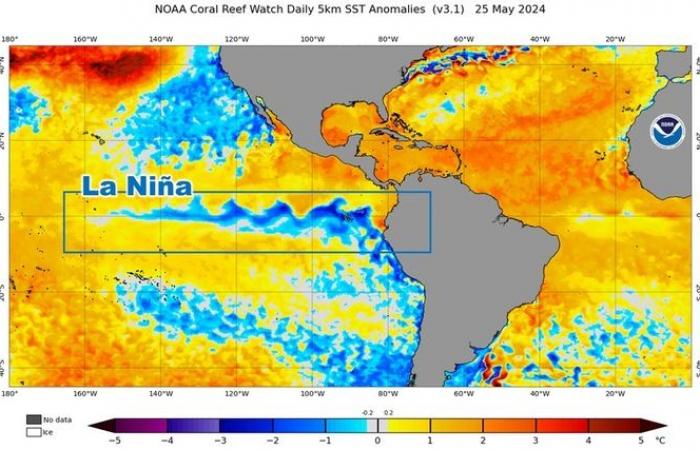Article dated 06/16/2024
5.40pm
by Mattia Gussoni Meteorologist
From Summer 2024 the climate will be affected by a particular phenomenon called Lto Nina which will have repercussions on the expected time in Europe and Italy.
This event (the Nina) indicates a cooling of surface water temperatures in the central and eastern Pacific Ocean which frequently influences the climate of our planet, with various consequences also in Europe and Italy as it manages to modify the planetary circulation of large atmospheric figures.
As indicated by latest forecasts from the Climate Prediction Center (CPC) of NOAA, since the current month of June, sea surface temperatures (SST) have fallen well below climatic averages in most of the equatorial Pacific Ocean. The map below highlights the negative anomaly (in blue) right on the Pacific Ocean off the coast of South America.
Not only that, one of the most dangerous consequences of La Niña in the world is linked to the occurrence of frequent storms in the Atlantic sector. In fact, it generates more favorable conditions for the formation of Hurricanes in the central Atlantic basin, in particular due to the weaker wind gradient at altitude and greater atmospheric instability. These conditions not only favor more numerous, but also longer-lasting hurricanes, thus posing a greater risk of impact on American lands.
This type of phenomenon, which once practically only affected the oceans, is also increasingly forming in the Mediterranean (Mediterranean Hurricane), with potential consequences that also closely concern our Italy. The risk, for our country, is to have extreme events such as storms and in the most exceptional cases the so-called “flash floods” which usually affect narrow areas of territory (as happened in Tuscany and Romagna in 2023, in Ischia and the Marche in 2022 and in 2021 in Sicily, just to mention the most recent ones), discharging large quantities of water to the ground.
Despite a increase in extreme weather events, this does not mean that summer will be cool, on the contrary. The projections of Central European for the summer quarter indicate the possibility of very high temperatures, abruptly interrupted by storm phenomena associated with La Niña. In conclusion, we could have a very hot summer, characterized by long phases of African high pressure, however frequently interrupted by dangerous intense storms, especially in the Central-Northern regions.






